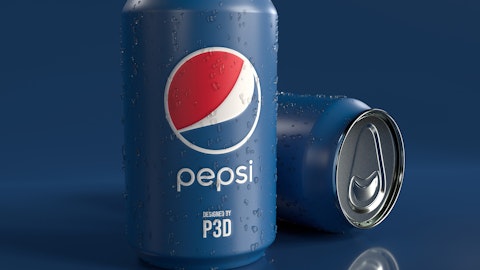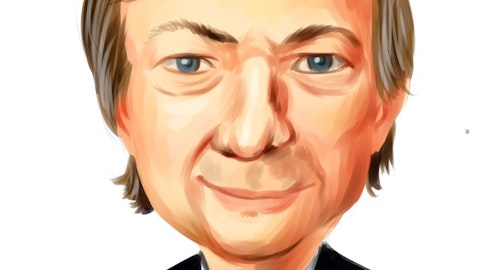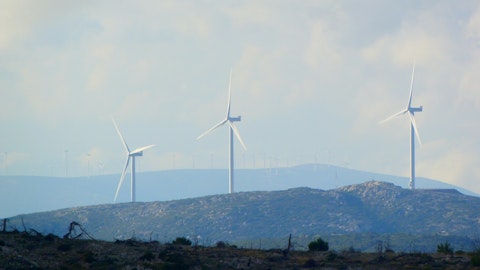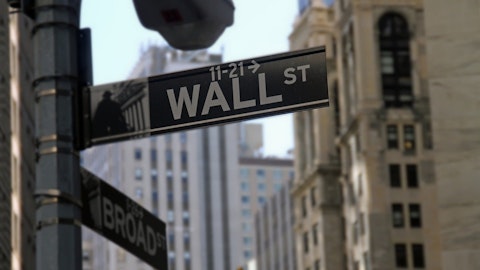Lindsell Train, an investment management firm, published its third-quarter 2022 investor letter – a copy of which can be downloaded here. In its third-quarter letter, the fund mentioned that in the 11 years since its launch but excluding takeovers, it has made just four complete sales. Far from splitting seconds, its since-inception turnover averages at under 4% per annum, giving an implied holding period of over 25 years. Try to spare some time to check the fund’s top 5 holdings for you to have an idea about their best stock picks this 2022.
In its Q3 2022 investor letter, Lindsell Train mentioned PepsiCo, Inc. (NYSE:PEP) and explained its insights for the company. Founded in 1965, PepsiCo, Inc. (NYSE:PEP) is a Harrison, New York-based multinational food, snack, and beverage corporation with a $249.8 billion market capitalization. PepsiCo, Inc. (NYSE:PEP) delivered a 4.39% return since the beginning of the year, while its 12-month returns are up by 7.04%. The stock closed at $181.34 per share on December 19, 2022.
Here is what Lindsell Train has to say about PepsiCo, Inc. (NYSE:PEP) in its Q3 2022 investor letter:
“At this point, it may help to give a further example of these self-reinforcing moats to illustrate the idea, drawing from the consumer franchises side of our portfolio. In our view, strong consumer brands can similarly exhibit Lindycompatible anti-ageing properties. Consider, that the longer a company invests in its brands through advertising and R&D, the stronger and more resonant they may get. When successful, a self-sustaining feedback loop is established, whereby it becomes ever harder to recreate a heritage-rich brand from scratch, raising barriers to entry, and proportionately increasing its likely lifespan. There are plenty of long-lived portfolio franchises I could reference here, but I’ve gone with PepsiCo (NYSE:PEP); partly because we have good time-series stats on it (beware data bias!) but also, as I hope will become evident, because Pepsi over its 129 years has succeeded in creating some wonderfully deep moats.
With Pepsi Cola you get the flagship soft drinks brand, which is both global and generational, but you also get the Frito-Lay salty snacks portfolio assembled alongside it, claiming nearly 40% of the global market. That’s ten-times greater than the nearest competitor and likely higher than the next 65 competitors combined. These are exceptionally strong global bands with market shares to match; the long-term empirical result being Pepsi’s dividend record which over the past 66 years (as far back as we’ve been able to go) has compounded at an annualised rate of 10%. Pepsi is no ‘in at the ground floor’ start-up today, but it wasn’t six decades ago either. Early growth investor Philip Fisher put it well when in 1958 (two years into Pepsi’s current winning streak) he wrote of “companies which in spite of outstanding prospects of major further growth are so financially strong, with roots going so deep into the economic soil, that they qualify under the general classification of ‘institutional stocks’”. PepsiCo fits this description well…” (Click here to see the full text)
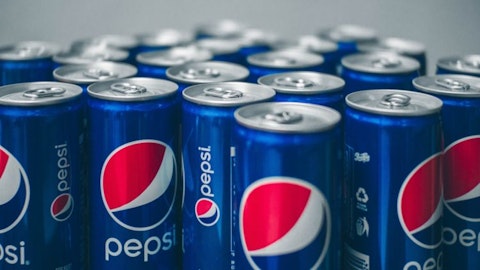
ja-san-miguel-xYSp0kkIUio-unsplash
Our calculations show that PepsiCo, Inc. (NYSE:PEP) fell short and didn’t make it on our list of the 30 Most Popular Stocks Among Hedge Funds. PepsiCo, Inc. (NYSE:PEP) was in 72 hedge fund portfolios at the end of the second quarter of 2022, compared to 65 funds in the previous quarter. PepsiCo, Inc. (NYSE:PEP) delivered a 7.47% return in the past 3 months.
In August 2022, we also shared another hedge fund’s views on PepsiCo, Inc. (NYSE:PEP) in another article. You can find other investor letters from hedge funds and prominent investors on our hedge fund investor letters 2022 Q3 page.
Suggested Articles:
- 15 Countries with Highest Interest Rates
- 12 Most Advanced Countries in Space Technology
- 15 Countries that Produce the Most Plastic Waste
Disclosure: None. This article is originally published at Insider Monkey.

